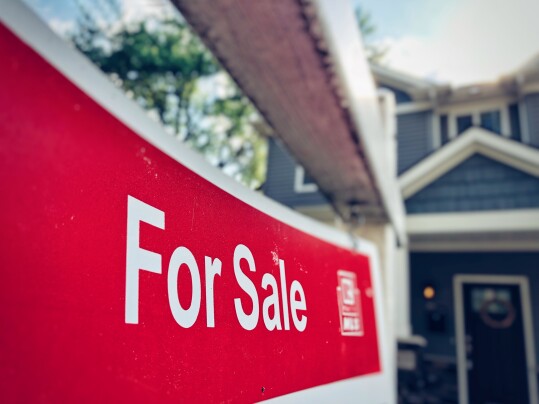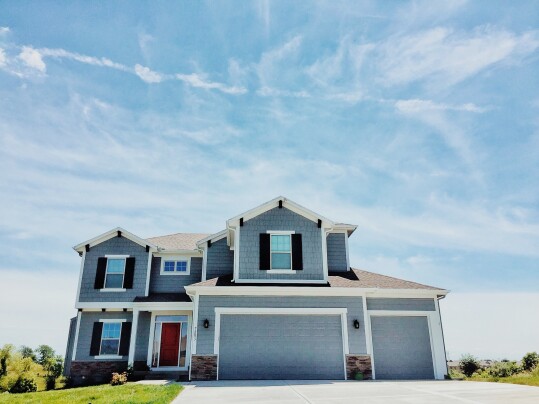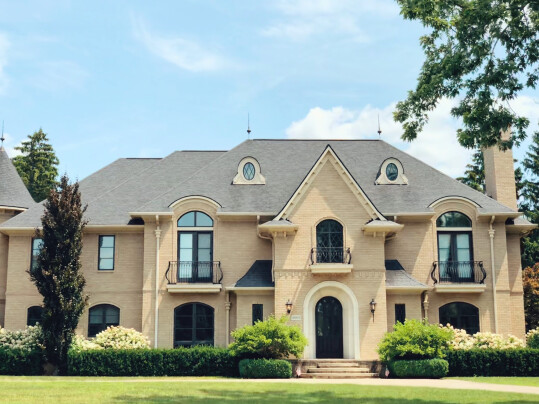In May, sales of previously owned homes rose 0.2 percent from the month before, according to new numbers from the National Association of Realtors. The increase, though slight, added to growing evidence that home buyers remain active and interested this year. Lawrence Yun, NAR’s chief economist, says steady rates have helped. “Mortgage rates heavily influence the direction of home sales,” Yun said. “Relatively steady rates have led to several consecutive months of consistent home sales.” But while steady rates have calmed buyers and led to increasing demand, the lack of available homes for sale continues to hold back sales. At the end of May, there was a 3-month supply of available existing homes for sale at the current sales pace. For comparison, a 6-month supply is considered healthy for the housing market. But though inventory remains low, the report found that it’s improving, rising nearly 4 percent from April to May. (source)
Archive for June 2023
May Sales Of Existing Homes Up From April
Purchase Demand Rises Despite Mixed Rates
According to the Mortgage Bankers Association’s Weekly Application Survey, average mortgage rates for 30-year fixed-rate loans with conforming loan balances fell last week – while jumbo loans, FHA loans, 5/1 ARMs, and 15-year fixed-rate loans all saw week-over-week increases. Still, despite mixed rates, demand from home buyers rose, climbing 2 percent from the week before. Joel Kan, MBA’s vice president and deputy chief economist, says buyer demand remains firm, especially among first-time buyers. “Purchase applications increased, driven by a 2 percent gain in conventional purchase applications and a 3 percent increase in FHA purchase activity,” Kan said. “First-time home buyers account for a large share of FHA purchase loans, and this increase is a sign that while buyer interest is there, activity continues to be constrained by low levels of affordable inventory.” Overall, demand for mortgage applications was up 0.5 percent last week from the week before. The MBA’s weekly survey has been conducted since 1990 and covers 75 percent of all retail residential mortgage applications. (source)
Where Will You Get The Money To Buy A Home?
Buying a house requires a plan. It’s not something you do on a whim. A big part of that plan is figuring out your financing. The details of how much you’ll need and where you’ll get it are among the first you’ll need to nail down. So what strategies are today’s home buyers using to finance their home purchase? Well, according to one recent survey, loans top the list. That’s no surprise. The vast majority of us will require a mortgage to buy a house. Loans from financial institutions were named by 68 percent of survey respondents. Americans are also leaning on support from friends and family. Twenty-three percent of participants said they expect to use a financial gift from someone close to them to help cover upfront costs and a down payment. Outside of loans and gifts, the other most popular answer was savings, with 46 percent of survey respondents saying they plan to use money they’ve saved. Whichever strategy you use, be sure to figure it out before you fall in love with any listings. Not having your financing lined up in advance is a great way to lose the home of your dreams to a better prepared buyer. (source)
New Home Builders Optimistic About Market
The National Association of Home Builders conducts a monthly survey of builders in order to gauge their confidence in the market for new homes. Builders have a unique perspective on the market and, because of that, the NAHB’s survey is a closely watched barometer of housing health. In June, the index reached positive territory for the first time in almost a year. In fact, the index scored a 55 on a scale where any number above 50 indicates that more builders view conditions as good than poor. The reason for home builders’ growing optimism? There are several. The lack of available existing homes for sale is one. Because buyers are struggling to find previously owned homes to buy, the new home market is seeing more demand. Robert Dietz, NAHB’s chief economist, says the likelihood that the Fed will slow interest-rate increases is another. “The Federal Reserve nearing the end of its tightening cycle is also good news for future market conditions in terms of mortgage rates and the cost of financing for builder and developer loans,” Dietz said. (source)
Homeownership Ranks High On Good Life List
There isn’t one definition of “the good life.” It’s a little bit different for everyone. But while we each have our own individual dreams, goals, and aspirations, there are some things we all agree are included in the good life. Health and financial security, for example. In a recent survey from Fannie Mae, both were named important or somewhat important by nearly 100 percent of respondents. It makes sense. After all, you can’t enjoy much without your health and enough money to take care of yourself. Living somewhere you love also made the list, with 94 percent saying it was an important part of the good life. But what about homeownership? Well, Fannie Mae took the same survey in 2020, when rates were historically low and the home buying frenzy was in full swing. Back then, 87 percent of participants said owning a home was key to living the good life. What about now, though? Has anything changed after the price and rate increases of the past two years? Surprisingly, no. The new survey found the exact same share of participants put homeownership on the list. That’s more than twice as many as those that said fancy cars, jewelry, and clothes were most important. (source)
Housing Slowdown Impacts High-End Markets Most
The market conditions home buyers encounter when they head out to shop for a home depend a lot on what they’re looking for and where. Some markets are still hot, with buyers competing for available listings and sellers receiving multiple offers – others have slowed significantly from their pandemic pace. One new analysis looked at recent patterns in home prices, affordability, underwater mortgages, and foreclosures in an effort to determine exactly which markets are feeling the slowdown and which are still running strong. The results show affordable markets – especially in the South, Midwest, and Northeast – have been relatively unaffected by housing’s recent downturn. Markets in the West, on the other hand, and those where median home values exceed $350,000, have seen a bigger impact. “We are starting to see some patterns that show where the U.S. housing market is cooling off and how it’s hitting homeowners based on some key metrics,” Rod Barber, ATTOM’s CEO, said. “It looks so far – and it’s important to stress, so far – to be having more impact in places with the highest housing costs and less impact elsewhere.” (source)
Mortgage Rates Decline For Second Week
According to the Mortgage Bankers Association’s Weekly Applications Survey, average mortgage rates fell for the second straight week last week. Rates were down across most loan categories including 30-year fixed-rate loans with conforming balances, loans backed by the Federal Housing Administration, 15-year fixed-rate loans, and 5/1 ARMs. The decline was good news for home buyers, though challenging conditions remain. Joel Kan, MBA’s vice president and deputy chief economist, says buyer demand has been constrained. “Rates that are still more than a percentage point higher than a year ago, and low for-sale inventory continue to constrain home buying activity in many markets,” Kan said. Still, demand for loans to buy homes surged last week, increasing 8 percent from the week before. The MBA’s weekly survey has been conducted since 1990 and covers 75 percent of all retail residential mortgage applications. (source)







